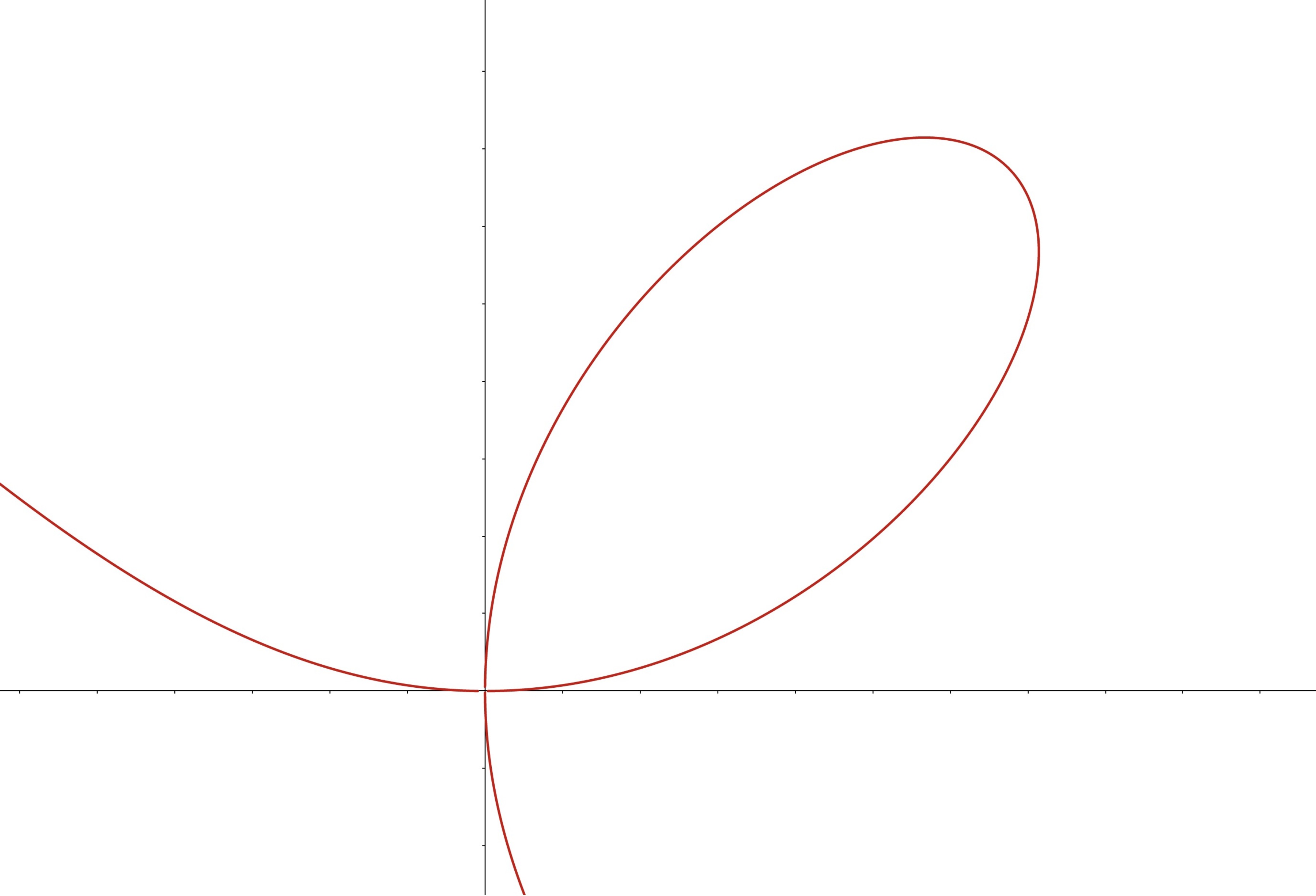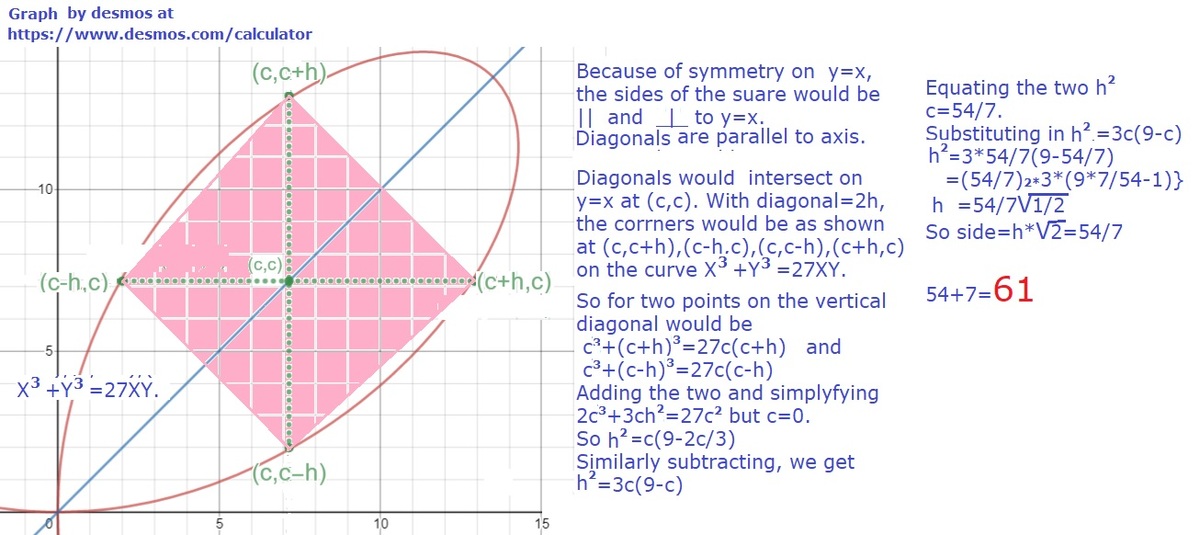A leaf with an inscribed square
Here is a graph of . Find the largest square which can be inscribed in the 1st quadrant loop of this graph. If the length of a side of such a square can be expressed as the ratio of two coprime integers, , please submit . Otherwise submit -1.

The answer is 61.
This section requires Javascript.
You are seeing this because something didn't load right. We suggest you, (a) try
refreshing the page, (b) enabling javascript if it is disabled on your browser and,
finally, (c)
loading the
non-javascript version of this page
. We're sorry about the hassle.

Applying the transformation x = x ′ cos 4 5 ° − y ′ sin 4 5 ° and y = x ′ sin 4 5 ° + y ′ cos 4 5 ° rotates the leaf 4 5 ° and gives it a new equation of ( 2 2 x − 2 2 y ) 3 + ( ( 2 2 x + 2 2 y ) ) 3 = 2 7 ( ( 2 2 x − 2 2 y ) ) ( ( 2 2 x + 2 2 y ) ) , which rearranges to y = ± − 3 ( 2 x + 9 2 x 2 ( 2 x − 2 7 2 .
Let the points of the inscribed square be P ( a , c ) , Q ( b , c ) , R ( b , − c ) , and S ( a , − c ) . Then by the properties of a square, b − a = 2 c , and since P and Q are on the equation of the leaf, c = − 3 ( 2 a + 9 2 a 2 ( 2 a − 2 7 2 and c = − 3 ( 2 b + 9 2 b 2 ( 2 b − 2 7 2 .
These three equations solve to a = 7 5 4 2 − 2 7 , b = 7 5 4 2 + 2 7 , and c = 7 2 7 for a < b , which makes the side length of the square s = 2 c = 2 ⋅ 7 2 7 = 7 5 4 .
Therefore, p = 5 4 , q = 7 , and p + q = 6 1 .